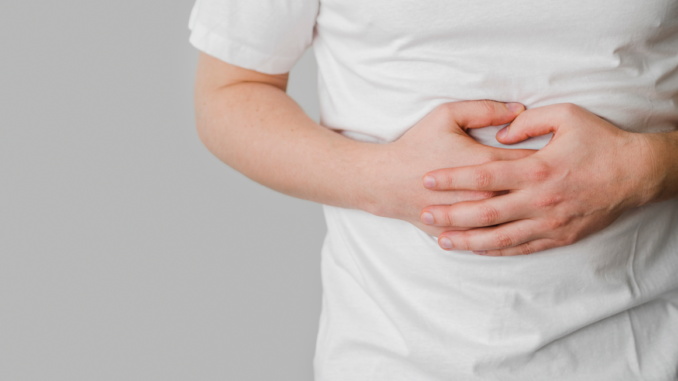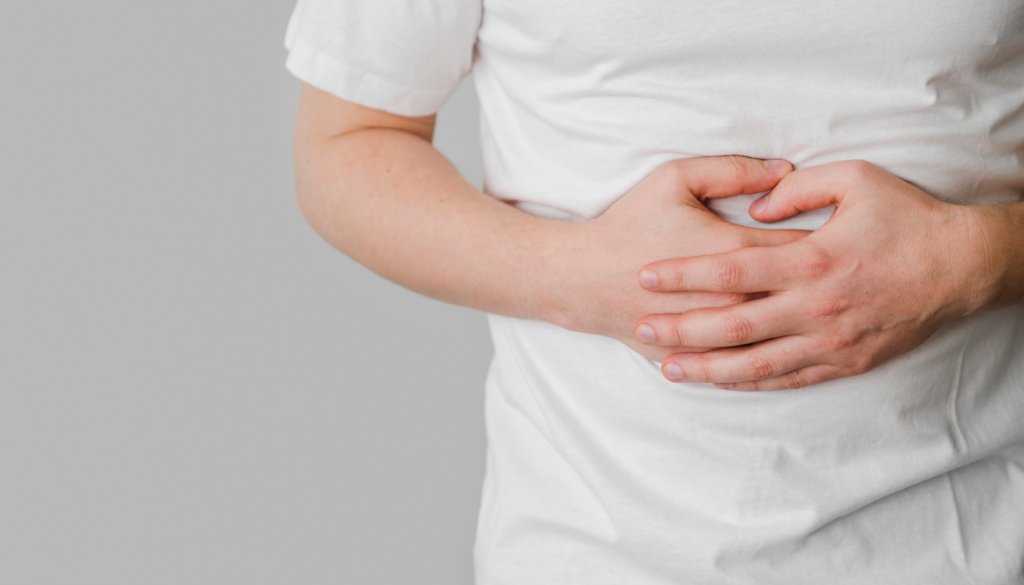
Acalculous cholecystitis is a form of inflammation of the gallbladder that can occur even in the absence of gallstones as the root cause of the condition. This type of cholecystitis can be quite painful.
Cholecystitis that is not caused by the presence of gallstones is referred to as acalculous. The term “acalculous” is used to describe this type of cholecystitis. Inflammation of the gallbladder is the primary symptom of the illness known as cholecystitis.
The gallbladder is a small organ that has the shape of a pear and is situated on the right side of the belly, just below the liver. It is responsible for the production and storage of bile, a digestive juice that is released into the small intestine.
Gallstones are responsible for the majority of cases of cholecystitis because they block the tube that leads to the gallbladder. Because of this, bile begins to build up, which in turn leads to inflammation.
Cholecystitis can also be caused by tumors and problems with the bile ducts. People who have chronic illnesses such as diabetes, which increase the risk of gallbladder swelling and inflammation, are typically the ones who suffer from acute acalculous cholecystitis.
The treatment of acalculous cholecystitis is wholly dependent on the symptoms that are linked with it as well as the patient’s overall state of health. The condition warrants treatment in the hospital . The gallbladder must be removed surgically as a last resort in the therapeutic process.
If left untreated, occurrences of acalculous cholecystitis can lead to serious issues for the patient’s health, including the organ rupturing, becoming infected, or becoming enlarged. Acalculous cholecystitis can manifest in a variety of ways.
Table of Contents
Acalculous Cholecystitis – Symptoms
There is a wide range of signs and symptoms that can be brought on by the accumulation of bile that is associated with acalculous cholecystitis.
The following is a list of some of the symptoms that are associated with acalculous cholecystitis:
- Patients will frequently complain of constant pain located in the upper right quadrant of the abdominal region.
There is a possibility that this ache will occasionally spread to the back as well as the right shoulder blade. - After eating a meal that is particularly heavy or high in fat, those who are afflicted may also have severe to moderate pain in the right side of their abdomen. This kind of discomfort may linger for a number of hours.
- There is a possibility that a few patients will have pain in the belly that will gradually become more severe and may even inhibit their capacity to take full, deep breaths.
- Other symptoms of acalculous cholecystitis include fever, abdominal soreness on the right side, nausea, vomiting, pain that worsens with deep breathing, abdominal bloating, chills, and sweating. Acalculous cholecystitis can also cause pain that worsens with deep breathing.
- It is also possible that people who are affected by the condition will not feel any symptoms of the condition, with the exception of sporadic and slight discomfort in the abdominal region.
- It’s also possible that the sole symptom older people have is a sore abdomen. It’s possible that you won’t have any pain or fever.

Acalculous Cholecystitis – Causes
The accumulation of bile in the gallbladder, which can be caused by tumours, gallstones, or other issues, prevents the acidic liquid from being discharged into the small intestine and the upper digestive tract. This can be a life-threatening condition. This ultimately results in inflammation of the gallbladder as well as cholecystitis and acalculous cholecystitis.
Chronic cases of acalculous cholecystitis can result in aberrant physiological changes inside the gallbladder, such as the tissue becoming harder and the gallbladder becoming smaller.
Loss of elasticity, which further impairs the organ’s capacity to contract and release bile, is a consequence of the organ’s progressive process of contracting and becoming more rigid.
Inflammation and swelling of the gallbladder can eventually occur as a result of a gallbladder that is not functioning properly and has an increased accumulation of acidic bile.
Cholecystitis is almost always brought on by gallstones, which are responsible for blocking the cystic duct and causing inflammation in the gallbladder.
On the other hand, acalculous cholecystitis can be brought on by factors other than the presence of gallstones in the bile duct. It can be caused by a tumour that prevents the free passage of bile from the gallbladder, as well as scarring or kinking of the bile ducts or other bile duct blockages that result in accumulation of the fluid, and eventually the development of acalculous cholecystitis.
Additionally, it can be caused by other bile duct blockages that prevent the free passage of bile from the gallbladder.
It is also important to remember that women and people who are older than average are more likely to develop acalculous cholecystitis.
Acalculous Cholecystitis Treatment
Patients who are undergoing therapy for acalculous cholecystitis are need to remain hospitalized throughout the process.
The following are the components of the treatment:
Hospitalization
The physician could recommend a few different treatments in order to alleviate the discomfort caused by gallbladder inflammation. After a couple of days in the hospital, the symptoms will typically disappear on their own.
If the doctor determines that an infection is the cause of acalculous cholecystitis or that the organ itself is infected, then he or she may give a different class of medications.
Patients might be advised to take part in fasting, which involves going for extended periods of time without drinking or eating anything at all. This will relieve some of the strain that is being placed on the enlarged gallbladder.
Fluids may be given intravenously in order to prevent the patient from becoming dehydrated. Pain relievers are another option for treating the discomfort caused by the gallbladder.
Surgery
After a person has been diagnosed with acalculous cholecystitis, the condition has a high propensity to reoccur on a frequent basis. Because of this, most medical professionals agree that the only way to permanently remedy the disease is to have the gallbladder surgically removed.
In addition, it is important to note that individuals who develop problems as a result of acalculous cholecystitis, such as rupture, perforation, or gangrene of the gallbladder, may be required to have emergency surgery.
Cholecystectomy is the operation that is performed the most frequently in order to remove the gallbladder.
The surgeon will make very small incisions in the patient’s abdomen in order to insert a tiny camera that is attached to one end of a flexible tube. The surgeon will then perform the operation with the assistance of specific surgical tools and the images that are projected on the monitor by the camera.
People are able to continue to live a healthy life without the gallbladder because it is not an organ that is required for survival.The bile will proceed on its way into the digestive tract in a direct manner. The patient’s capacity to digest meals has also not been adversely affected by the condition. However, it is possible for the patient to develop a transient bout of diarrhoea after the procedure.
Authoritative Clinical References
Acalculous Cholecystitis → https://www.ncbi.nlm.nih.gov/books/NBK459182/


Be the first to comment